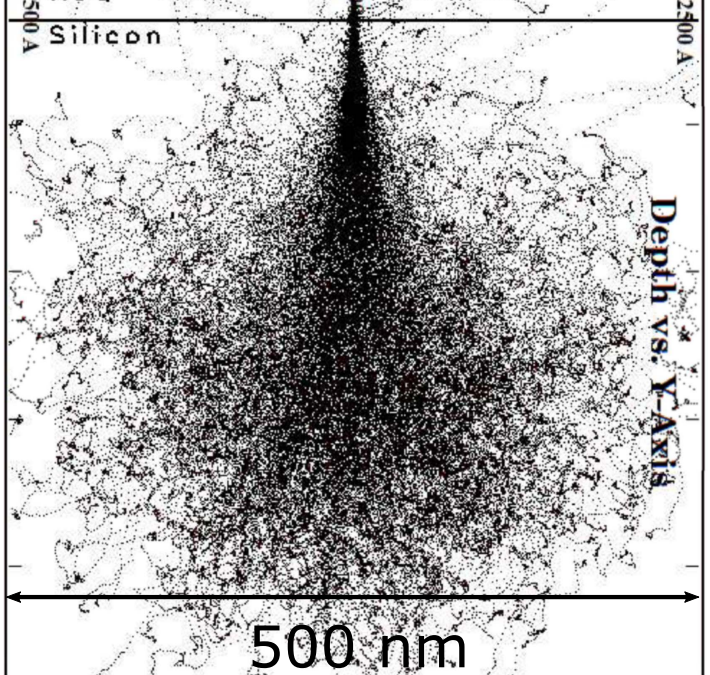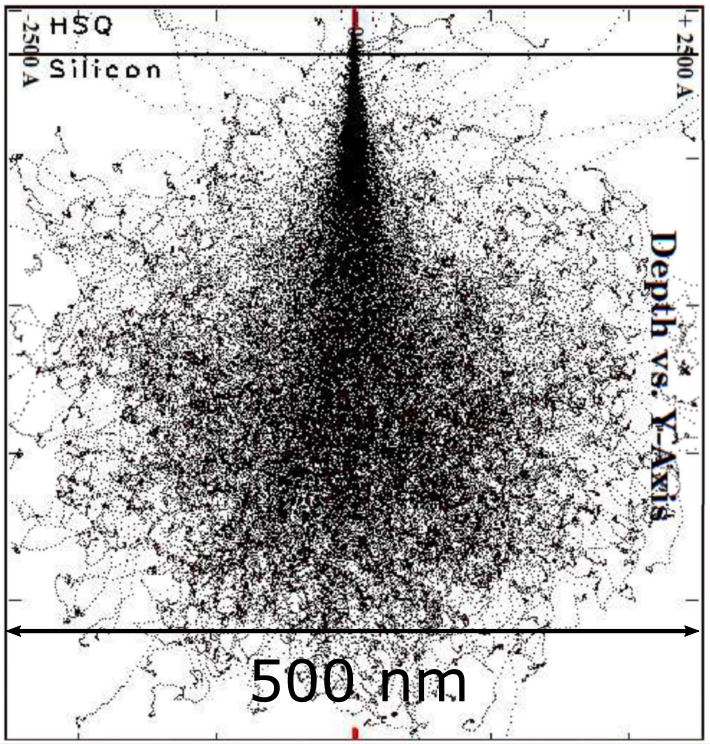Helium ion beam lithography (HIL) is an emerging nanofabrication technique. It benefits from a reduced interaction volume compared to that of an electron beam of similar energy, and hence reduced long-range scattering (proximity effect), higher resist sensitivity and potentially higher resolution. Furthermore, the small angular spread of the helium ion beam gives rise to a large depth of field. This should enable patterning on tilted and curved surfaces without the need of any additional adjustments, such as laser-auto focus. So far, most work on HIL has been focused on exploiting the reduced proximity effect to reach single-digit nanometer resolution, and has thus been concentrated on single-pixel exposures over small areas. Here we explore two new areas of application. Firstly, we investigate the proximity effect in large-area exposures and demonstrate HIL’s capabilities in fabricating precise high-density gratings on large planar surfaces (100 μm × 100 μm, with pitch down to 35 nm) using an area dose for exposure. Secondly, we exploit the large depth of field by making the first HIL patterns on tilted surfaces (sample stage tilted 45°). We demonstrate a depth of field greater than 100 μm for a resolution of about 20 nm.
A complete description of the work may be found here.
Citation:
Ranveig Flatabø, Akshay Agarwal, Richard Hobbs, Martin M Greve, Bodil Holst and Karl K Berggren “Exploring proximity effects and large depth of field in helium ion beam lithography: large-area dense patterns and tilted surface exposure” Nanotechnology 29, 27 (2018)

